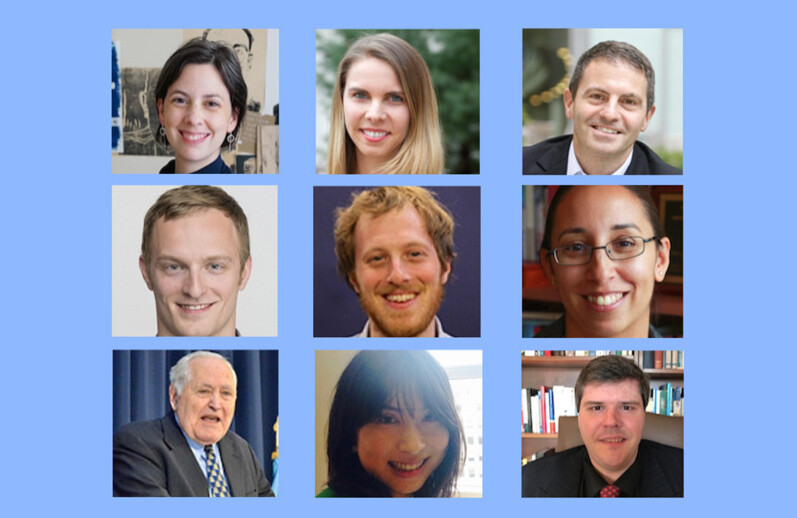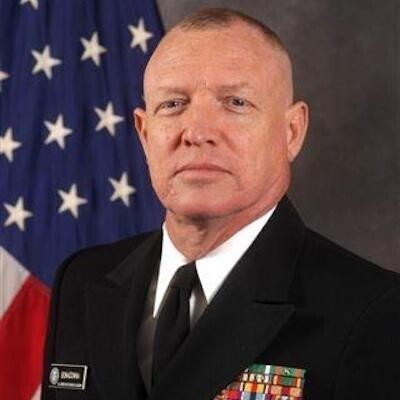With the August 1 due date for completed projects approaching, most research completed, and interviews with all Fellows posted on the Carnegie Council website, it is a fitting time to reflect on the progress and discovery experienced by the First World War Fellows. Every research project is a journey of some kind. The learning and literal travel experienced by the nine First World War Fellows make for interesting and instructive reading
Katherine Akey, U.S. World War I Centennial Commission: "Collective Memory and the Hidden Photographic Narratives of World War I"
After Katherine Akey discovered a private collection of photographs taken of World War I veterans who had suffered facial wounds, she came to realize that she had found a way to combine her interests in history and photography in an important project. Her project raises issues concerning the personal costs of war and how the subject of war is experienced and avoided. A favorite image of hers is of the American hospital at Neuilly-sur-Seine. This beautiful, airy building with its scenic location near Paris was likely one of the best places a wounded World War I soldier could be sent. The contrast between the beautiful hospital, the grievously wounded soldiers and the brutal war from which they had barely escaped might stand as a symbol for the paradoxes of war and war experience, which often combine beauty and sublimity, cruelty and courage, loss and fulfillment. To hear or read an interview with Akey, click here.
Mary Barton, Historical Office of the Office of the U.S. Secretary of Defense: "European and American Strategies of Counterterrorism in the Aftermath of World War I"
Dr. Mary Barton says that the excuse to travel to conduct research is one of her favorite aspects of working as a historian. Much of Barton's research took place while she was studying abroad at Oxford. This gave her the opportunity to visit London, Geneva, and Paris to make use of historical archives. The League of Nations archive, situated by Lake Geneva in an historic building, is one of her favorite destinations. She also was able to stand on the bridge in Sarajevo where the Archduke Ferdinand was shot, the terrorist event that sparked the First World War. Barton will continue to do work on terrorism for the Defense Department, and a book on the subject is almost certainly in her future. The relevance of her topic cannot be overstated, and the close partnership that developed between Britain and America during this period is both an early manifestation of the "special relationship" and a reminder of the need to cross national and institutional boundaries in the struggle against the common enemies of civilization. To read an interview with Barton, click here.
Christopher Capozzola, Massachusetts Institute of Technology: "Merchants of Death? The Politics of Defense Contracting, Then and Now"
Prof. Christopher Capozzola believes that his project on the First World War munitions industry and the debate over defense spending that took place after the war raises "fundamental questions about how we organize both our democracy and our economy." America is both democratic and capitalist. The question of how the nation balances profit and social responsibility becomes sharpened in defense spending, which involves enormous expenditures, the national security, and, as President Eisenhower warned in his farewell address to the nation, "the disastrous rise of misplaced power." Capozzola would like to help modern people to imagine World War I in color, rather than in the grainy black and white we get from the photography of the day. After all, the colors of the world then were as vivid as they are today. It takes an act of imagination, and of empathy, to restore those colors as we revisit the war for its centennial. To hear or read an interview with Capozzola, click here.
Philip Caruso, Harvard Law School: "Airpower During the First World War"
As a former active-duty officer in the U.S. Air Force (and still a reservist) and a current law school student, Major Philip Caruso brings a rich background of experience and education to his project on the evolution of the laws of war in the air since World War I. His project traces the rules governing the use of airpower over the past 100 years. Written rules governing warfare are not much older than the use of aircraft in war. The rules have been evolving, while the technology and capabilities of airpower have been revolutionized. Aircraft have advanced very far, very fast in terms of speed, range, and firepower. Some technological changes have been driven by a desire to employ airpower with greater discrimination. On the other hand, advances in airpower have permitted its use in ways that stretch the limits of the allowable use of force. In this area, the United States has led the way, and may have to bear the consequences of its own example. The use of airpower will always present great strategic and moral challenges which ought to be enlightened by the study of the history of its origins. To hear or read an interview with Caruso, click here.
Zach Dorfman, Carnegie Council Senior Fellow: "Chemical Weapons from the Great War to Syria and Beyond"
Zach Dorfman's interest in chemical weapons was sparked by the death of his great-grandfather, a World War I veteran who died on the operating table after his gas-damaged lungs gave out under the anesthetic. Starting with this family tragedy, Dorfman's research into the use of chemical weapons has revealed some disturbing trends that are not widely acknowledged. The first is the tendency, since World War I, for chemical weapons to be used by repressive regimes against unprotected civilian populations. The second is the lack of clear of effective prohibitions against the use of chemical weapons. The third, and most disturbing, is the inadequacy and selectivity of the response of the international community to weapons which are supposed to be prohibited. The cruel use of chemical weapons against unprotected civilians has become almost a norm in parts of the Middle East. The Carnegie Council interview with Dorfman took place days after the allied attack on Syrian chemical supplies, an action he considers preferable to none, but very unlikely to much impair Syrian chemical weapon capacity or use, and even less effective in changing an international pattern of willful ignorance and neglect of a continuing cause of much human suffering. To hear or read an interview with Dorfman, click here.
Tanisha Fazal, University of Minnesota: "The Politics and Medicine of Treating Post-Traumatic Stress (PTS) Since World War I."
World War I was the beginning of a sustained attention on the part of the medical profession to the psychological effects of war (although their depictions in literature go back to the Iliad). Prof. Tanisha Fazal is researching a subject with which many are likely to feel uncomfortable. Still, the story she tells is a hopeful one in many ways. Since World War I, there has been a trend of greater understanding and acceptance of the facts of psychological trauma caused by war. This progress has been largely the result of the attentiveness and compassion of many people, physicians especially, and of their applying scientific rigor to sometimes bewildering causes and symptoms. Related to PTS is Moral Injury (MI), another ancient but recently named effect of war experience. MI occurs when people see or perform an act that strikes at their most deeply held moral beliefs. Both PTS and MI are of course very much with us today, and Fazal's work holds the potential to allow us to better understand and treat the service members, veterans, and the future generations who suffer their effects. To hear or read an interview with Fazal, click here.
Richard Millett, University of Missouri-St. Louis: "The United States, the Western Hemisphere, and World War I: Forgotten Aspects."
Prof. Richard Millett is a distinguished historian whose interest in Latin America began with a chance recommendation by his undergraduate advisor at Harvard. His Carnegie Council project has broken down into two halves, both of great relevance today. Much of Millett's research has been on the service of Puerto Ricans and other Hispanics in the U.S. Army in World War I. The other path his research has taken is to investigate the relationship of the U.S. and Latin Americans during and after the war. The service of immigrants and the children of immigrants in armed forces is a persistent theme of American military history, and one which might more fully inform attitudes towards immigrants today. The growing awareness on the part of the United States of Latin American countries as allies and trading partners during this period might also be an antidote to unthinking isolationism. Both subjects underline the self-defeating short-sightedness of policies driven by racism and other forms of fearful exclusion. To hear or read an interview with Millett, click here.
Seiko Mimaki, Takasaki City University of Economics: "World War I as a Key Moment in the History of Humanitarianism: Jane Addams and Her Cosmopolitan Ethics."
In her research, Prof. Seiko Mimaki reveals an extraordinary woman. Jane Addams combined erudition, activism, courage and moral authority. She had a powerful intellect and command of words, but she was not content to let thoughts or words be her aim. Her founding of Hull House in Chicago is well-known, but less so are her visits to France in World War I, and her conversations with soldiers and others personally affected by war. This was characteristic of her openness to many voices, to the shaping of policy and practice not just by elites and national governments, but by ordinary people and a multiplicity of organizations, to include the kind of "grass-roots" associations she had fostered and partnered with in Chicago. Addams in a sense represents an alternative or corollary to the cosmopolitanism associated with her First World War contemporary Woodrow Wilson. Her inclusive approach was well-suited to the pursuit of humanitarianism. Mimaki sees a modern example in the reaction of many local communities to the U.S. withdrawal from the Paris climate agreement. A "bottom-up" movement can correct or ameliorate the errors of the powerful. Mimaki cited Michael Ignatieff (former Carnegie Council Centennial Chair) as the public figure today who most resembles Addams in their work and ideas. In a time of increasing tyranny and xenophobia around the world, we certainly need more of their like. To hear or read an interview with Mimaki, click here.
Charles Sorrie, Trent University: "The Legacy of America Press Censorship during the First World War."
Prof. Charles Sorrie has an interest in World War I inspired by a family history of men who served in the Canadian Army in that conflict. He has pursued this interest through a Doctoral dissertation and other publications. His research on the Carnegie Council project has taken him to the Army War College in Carlisle, PA, the National World War I Museum in Kansas City, MO, and to the New York Public Library. Sorrie will focus on press censorship, but he is also interested in the way censorship was part of the propaganda effort. Censors sometimes edited copy to support the "making the world safe for democracy" narrative that was the preferred U.S. justification for fighting in World War I. This narrative has both persisted in historical accounts of the war, and it has been echoed in the narratives of later wars. His study also shows the meeting of two cultures, media, and military, that in wartime form a sometimes-uneasy coalition of truth and victory. To hear or read an interview with Sorrie, click here.




